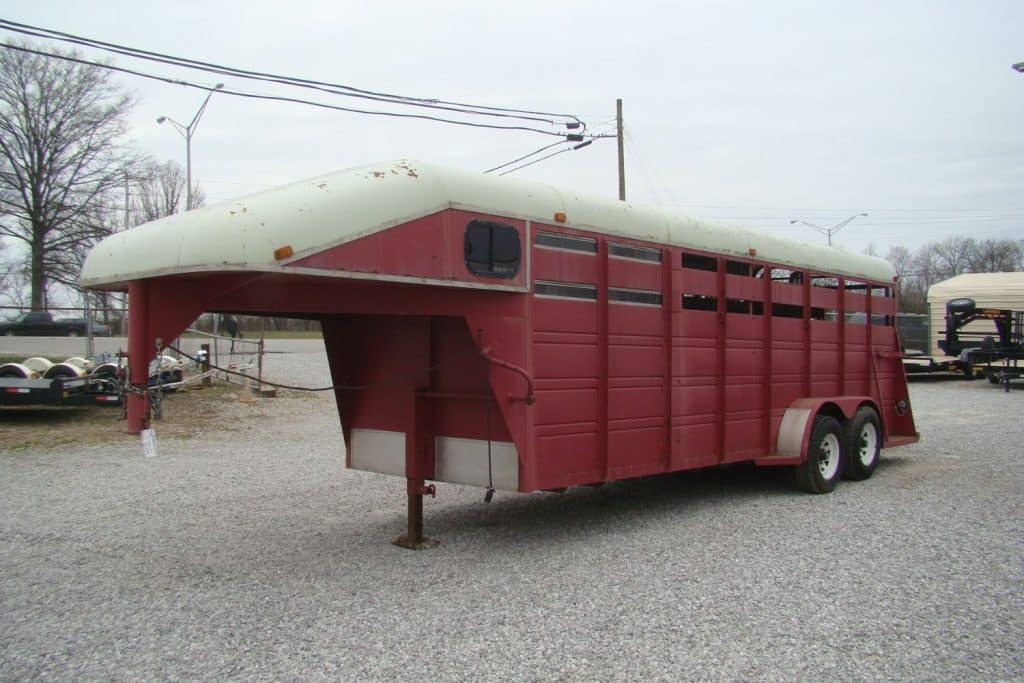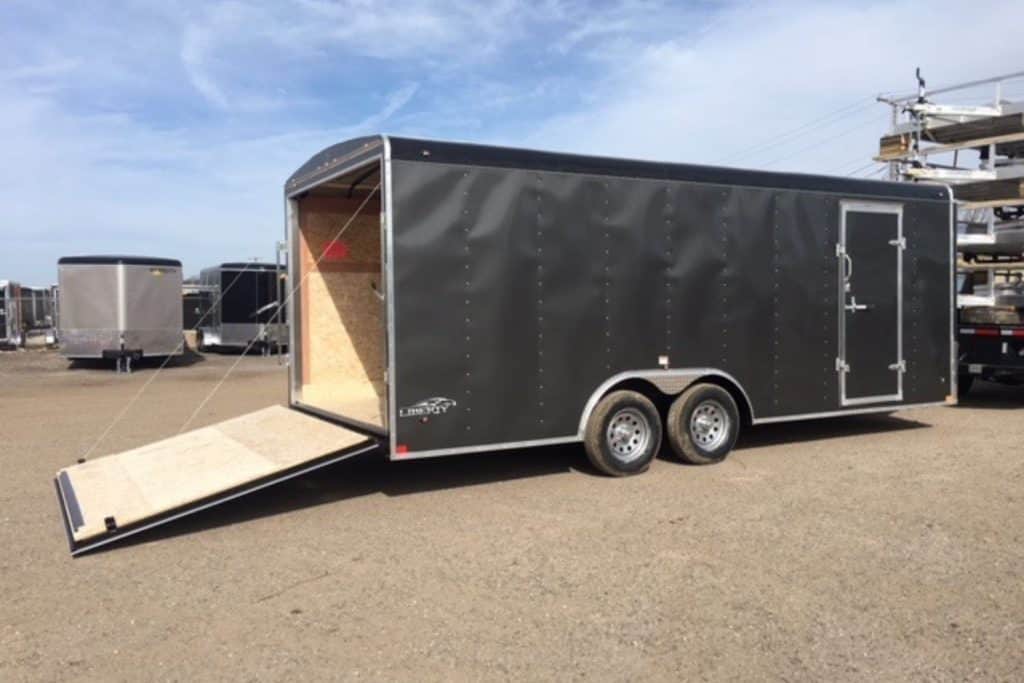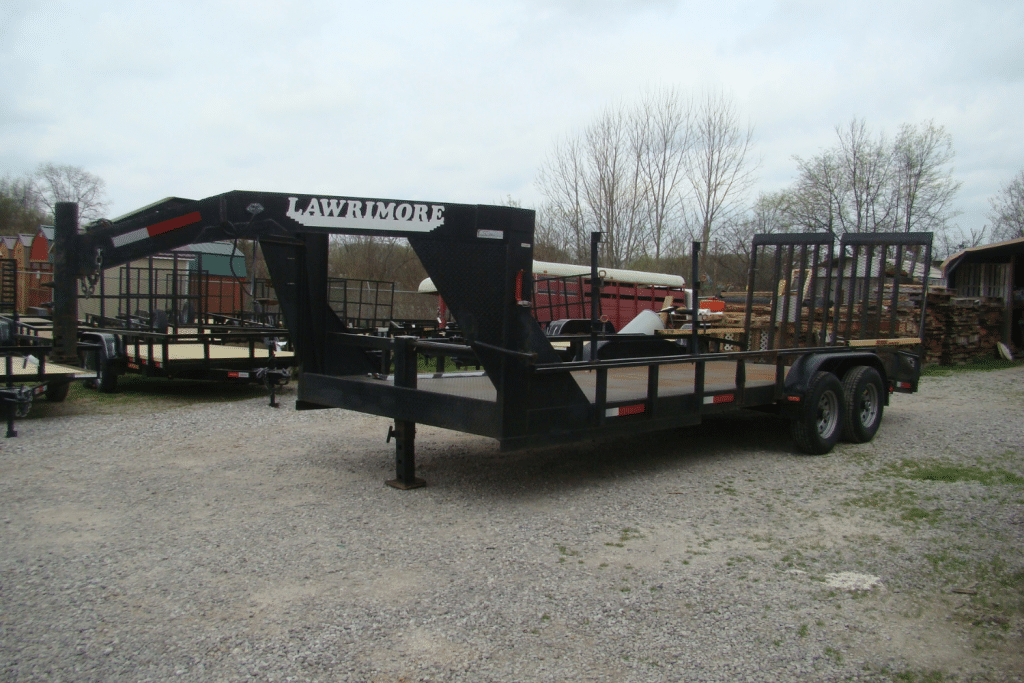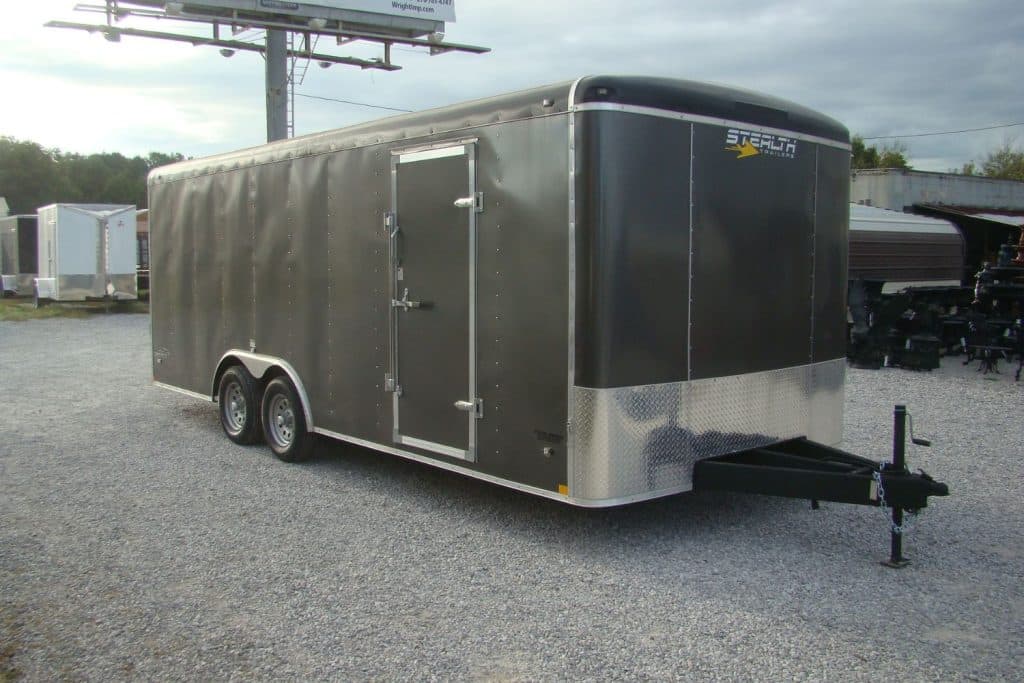
If you’re a rancher or a cattle owner, you understand the importance of transporting livestock efficiently and safely. In this blog, we will explore a piece of versatile and durable equipment that is designed to revolutionize the way you move your livestock, making sure they stay safe and comfortable throughout your trip. Let’s dive into all the questions you might have and the information that you need to know about moving your cattle using a livestock trailer.
What Is The Purpose Of A Livestock Trailer?
A livestock trailer, or cattle trailer, is a specialized type of trailer built for the transportation of cattle and other livestock. It typically offers a spacious and sturdy enclosure with good airflow and secure gates to keep the animals safe and comfy. Livestock or cattle trailers come in different sizes and types to fit almost any transport requirements. They play an important role to farmers, helping with the transportation of livestock between farms, processing sites, or auction houses.
Different Types of Livestock Trailers

There are several different types of livestock trailers; the three most common livestock trailers are Gooseneck, Bumper Pull Trailers, and cattle trailer insert which can be used on multiple styles of trailers. Below we will list a few livestock trailer types designed to cater to specific transportation needs and preferences.
- Gooseneck Trailers: These trailers are designed to connect to the bed of a pickup truck, providing increased stability and weight distribution. Gooseneck trailers are known for their strong towing capacity and are often used for transporting larger livestock.
- Bumper Pull Trailers: Bumper pull trailers also known as tag-along trailers, are connected to the hitch receiver on the rear bumper of a towing vehicle. They are smaller in size and ideal for hauling smaller herds or for short-distance transportation.
- Horse Trailers: Although primarily intended for transporting horses, these trailers can also be used to transport other livestock. These trailers are equipped with dividers and specialized features like living quarters or tack rooms for added convenience during long journeys.
- Stock Trailers: These trailers are adaptable and can transport different kinds of livestock. They typically feature open sides, providing better airflow and visibility.
- Double Deck Trailers: Double deck trailers feature two levels, allowing for more animals to be transported in a single trip. They are frequently used for large-scale livestock transportation, particularly for commercial purposes or when transporting a significant number of animals.
Livestock Trailers Size & Weight

How much does a 16’ livestock trailer weigh?
As a general estimate, a 16’ livestock trailer typically weighs around 2,000 to 4,000 pounds (907 to 1814 kilograms) without any animal or additional cargo loaded. The weight of a 16’ livestock trailer can vary depending on factors like construction materials, features, and the manufacturer’s design. It’s important to note that actual weights may differ between trailer models and brands, so it’s advisable to check with the manufacturer or review the trailer specifications for precise weight details.
How many cows fit in a 24-foot trailer?
A 24′ x 7′ trailer can safely haul up to eleven cows that weigh 1,200 pounds each.
One of the most common ways livestock get bruised is during transportation from one place to another, such as from the farm to the market or slaughterhouse. If cattle are put on a livestock trailer with too few or too many animals, they can get hurt or bruised and stressed. Farmers need to know how much livestock their trailers can handle to make sure they do not overload or underload.
It’s a good idea to group the cattle in the Cowpens before loading them onto the trailer. This makes it easier to load the right number of cattle. Below is a chart that shows how many cattle can be loaded onto different sizes of trailers. Use this chart to figure out how many cattle you can transport and plan your trips accordingly.
| Trailer Size (ft) | Average Cattle Weight(400) | Average Cattle Weight(600) | Average Cattle Weight(800) | Average Cattle Weight(1000) | Average Cattle Weight(1200) | Average Cattle Weight(1400) | Average Cattle Weight(1600) | Total Cattle Weight(lb) |
| 14×6 | 16 | 11 | 8 | 6 | 5 | 5 | 4 | <6500 |
| 16×6 | 18 | 12 | 9 | 7 | 6 | 5 | 5 | <7400 |
| 18×6 | 21 | 14 | 10 | 8 | 7 | 6 | 5 | <8400 |
| 20×6 | 23 | 15 | 12 | 9 | 8 | 7 | 6 | <9300 |
| 22×6 | 25 | 17 | 13 | 10 | 8 | 7 | 6 | <10200 |
| 24×6 | 28 | 18 | 14 | 11 | 9 | 8 | 7 | <11100 |
| 26×6 | 30 | 20 | 15 | 12 | 10 | 9 | 8 | <12000 |
| 28×6 | 32 | 22 | 16 | 13 | 11 | 9 | 8 | <13000 |
| 30×6 | 35 | 23 | 17 | 14 | 12 | 10 | 9 | <13900 |
| 32×6 | 37 | 25 | 18 | 15 | 12 | 11 | 9 | <14800 |
| 34×6 | 39 | 26 | 20 | 16 | 13 | 11 | 10 | <15700 |
| 20×7 | 27 | 18 | 13 | 11 | 9 | 8 | 7 | <10800 |
| 22×7 | 30 | 20 | 15 | 12 | 10 | 8 | 7 | <11900 |
| 24×7 | 32 | 22 | 16 | 13 | 11 | 9 | 8 | <13000 |
| 26×7 | 35 | 23 | 18 | 14 | 12 | 10 | 9 | <14000 |
| 28×7 | 38 | 25 | 19 | 15 | 13 | 11 | 9 | <15100 |
| 30×7 | 40 | 27 | 20 | 16 | 13 | 12 | 10 | <16200 |
| 32×7 | 43 | 29 | 22 | 17 | 14 | 12 | 11 | <17300 |
| 34×7 | 46 | 31 | 23 | 18 | 15 | 13 | 11 | <18400 |
Note: This chart represents the maximum number of dehorned/poled cattle for different-length trailers. If you’re transporting horned cattle then decrease the number of cattle by 5%. Consider reducing the number of heads loaded during hot weather.
Source: University of Tennessee
How To Choose The Right Cattle Trailer

There are several things you should consider that will keep your livestock safe and comfortable before purchasing a livestock/cattle trailer.
Below is a list of things to look for when buying one of these types of trailers.
Determine The Right Size
Choosing the right trailer size depends on factors such as livestock size and the number of animals to transport. Consider the capability of your tow vehicle as well. Combine the trailer’s dry weight with the estimated livestock weight and leave room for food, water, and equipment. If you have a smaller trailer, they are best fit for SUVs and other vehicles with limited towing, using a bumper pull. Small trailers are ideal for transporting a small number of animals, while larger trailers with gooseneck hitches are ideal for handling a large amount of livestock. Gooseneck trailers provide stability, but they do require a bed on the tow vehicle.
Frame Options
Typically, most livestock trailers are designed with either a steel frame or an aluminum frame. Sometimes, a manufacturer might offer a frame that combines both steel and aluminum.
Even though steel is a durable option, it can be prone to rust. Either buy a trailer that has already been painted to protect it against rusting or plan to paint and maintain it after purchasing if you plan on buying a steel trailer.
This is particularly crucial if you will be transporting livestock in areas where the roads are treated with mag chloride or salt.
If you’re looking for a lightweight, rust-resistant livestock frame, then aluminum is a great option. Although aluminum is more expensive, the lack of rust build-up could serve you better in the long run. The best option is a livestock trailer that implements both materials, creating a robust and durable trailer.
Flooring Choices
Livestock trailers commonly come with either wood plank or aluminum flooring. Non-slip surfaces like rubber mats are often added to provide stability for animals during transport. Sometimes you will also see a flooring called diamond plate!
Wood flooring is often used with steel frames, but it requires regular inspection for deterioration, especially in wet climates where it may rot. Treatment may be necessary.
Aluminum flooring is more durable but offers less comfort for livestock as it doesn’t absorb road vibrations as well as wood. It can also result in a hotter environment inside the trailer. Wood flooring tends to be cooler.
The Right Wall Type
Livestock trailers are equipped with either slatted or solid walls, each suitable for different climate conditions. Solid walls are ideal for colder climates because they provide protection from low temperatures and harsh weather conditions. On the other hand, slatted walls are suitable for hotter climates because they allow for increased airflow, which is important when transporting livestock in high humidity and hot temperatures.
When it comes to slatted walls, trailers can have slats extending from the floor to the roof or a combination of a solid wall at the bottom and slats near the roof. This allows for flexibility in balancing ventilation and privacy for the animals being transported.
Opt For A Step-Up Or Ramp Entry
When deciding on a livestock trailer, the entry point is an important factor to consider. Livestock trailers can have a ramp for convenient loading and unloading, or they may feature doors that open up, requiring animals to step up into the trailer and down when exiting.
A ramp is advantageous for livestock that may be challenging to load. It offers greater comfort to the animals and reduces stress on their joints. On the other hand, if the livestock is accustomed to climbing in and out of trailers, a step-up entry may be sufficient.
Do Your Research
Once you figure out what type of trailer you need based on the elements listed above, make sure you take time to do some research for your options. Search for inventory and compare specs.
Four Winds Livestock Trailers In KY

Are you looking for a cattle trailer to transport your livestock or just a trailer to move things around? At Four Winds, we offer various types of rent-to-own trailers to fit your personal needs. Check out our selection of Gooseneck trailers, Enclosed trailers, Utility trailers, Car haulers, Equipment trailers, Tow dollies, and Dump trailers.
